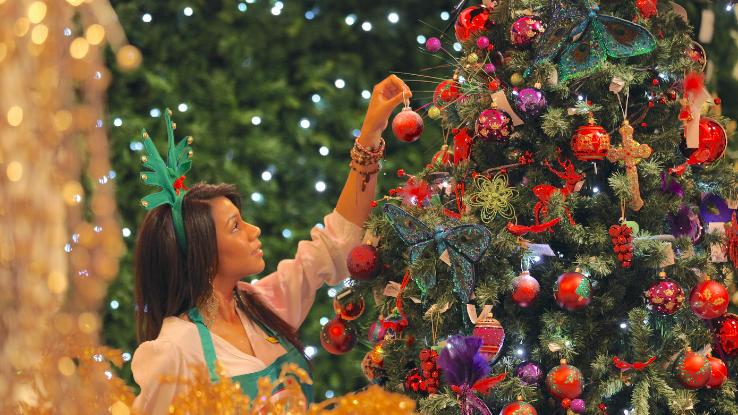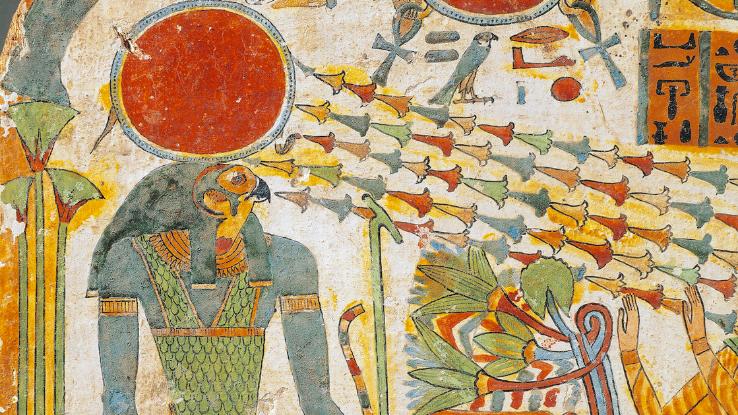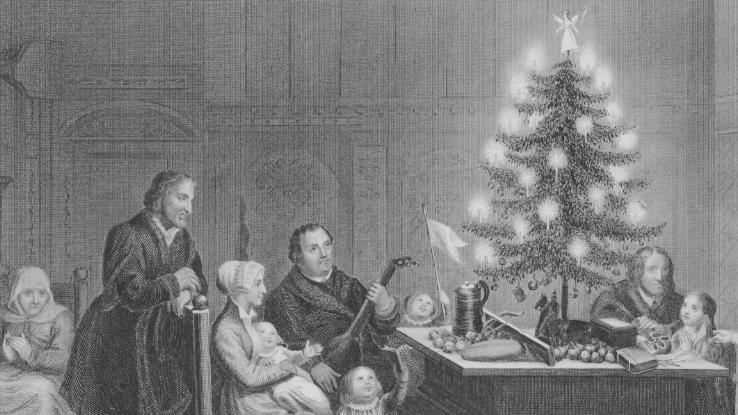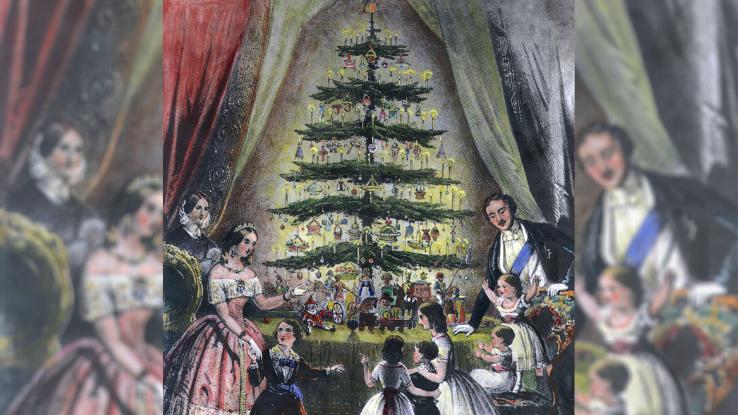Tap Tap Fish Christmas Tree Music Box Updated
Tap Tap Fish Christmas Tree Music Box

A Christmas tree adorned with twinkling lights and ornaments is an essential holiday ornamentation. It uplifts the spirits of people during the wintertime and carries the refreshing scents of pine cones and spruce. However, where did this tradition of bringing behemothic trees into our homes and decorating them come up from?
Long before Christmas copse became an American custom, aboriginal societies worldwide brought evergreens into their homes considering of their beliefs about harsh winters. Over fourth dimension, these practices transformed into the extravagant tradition that we know today — but it wasn't well-received past everyone. So, how did Christmas copse become a vital role of celebrating one of winter'southward biggest holidays? From evergreen boughs to huge annual ceremonies, this is how the tradition of Christmas copse started.
What Is the Meaning Behind Evergreen Trees and Plants?
Ancient cultures believed that the sunday was a god who became sick every winter. Using evergreen boughs, these early societies decorated their homes to mark the start of the sunday's recovery and winter's decline during the solstice. Plants and copse that remained green were reminders of the sun's power to create warm atmospheric condition and healthy life.

The early Egyptians had similar views regarding their sunday god, Ra, who weakened as the temperatures dropped. During the solstice, the Egyptians placed green palm rushes in their homes to symbolize Ra's triumph over death. Some other civilization with the same conventionalities, the ancient Romans, historic the solstice with greenery and a feast chosen Saturnalia, which honored Saturn — the god of agronomics. The solstice marked the render of bountiful fruits and vegetables, and the evergreen boughs the Romans displayed represented healthy crops that would shortly start growing. Fifty-fifty the Vikings thought evergreen boughs were meaningful to their sun god, Balder, and, the Celts believed evergreens signified everlasting life.
Placing greenery in homes and at celebrations connected in this way for centuries until the Christmas custom as nosotros know it began taking shape in Germany.
How Did Germany Shape the Tradition of Christmas Trees?
Germany is often credited with starting the custom of decorating Christmas trees. In the 16th century, devout Christians adorned trees with apples and nuts in their homes to represent the story of Adam and Eve. Some congenital Christmas pyramids made of wood, calculation evergreens instead of fruits and nuts when times were tough. As Christianity expanded across Europe, Christmas trees became a common feature in households.

The practice of adding lights to copse is commonly attributed to protestant reformer Martin Luther. As he walked home one winter night, Luther was amazed by the stars twinkling amid the evergreens. When he got abode, he recreated the scene with a tree and candles for his family unit.
Despite the tradition's widespread presence, many people didn't welcome the idea of Christmas trees.
When Did Christmas Trees Become Popular Amongst Americans?
In the 1840s, many Americans saw the European do of decorating trees every bit a threat to the sanctity of Christmas when Germans immigrated to the U.S. Equally a result, New England Puritans banned the hanging of decorations, calling them unacceptable pagan symbols. People who decorated in whatever way were punished.

However, the Puritan view of holiday decorations slowly changed as many German language immigrants moved to the U.S. and spread the tradition of Christmas trees. More Americans embraced the custom after England'due south Queen Victoria and her family put up a Christmas tree at Windsor Castle. The event was depicted in a pop publication, The Illustrated London News, in 1848, compelling Americans to believe that Christmas trees were vacation essentials.
In the 1890s, Christmas decorating in the U.South. exploded. Initially, Germany shipped ornaments to the U.S., but past the 20th century, Americans had begun decorating copse with homemade ornaments, such every bit popcorn and cookies. Trees made of synthetic materials also became pop.
When electricity gave rising to Christmas lights, lit trees were presently erected in public spaces across the country. The custom made its style into the White House in 1923, when President Calvin Coolidge started the National Christmas Tree Lighting Ceremony. The celebratory ritual is now held every year on the n lawn of the White Business firm.
Aside from the White House Christmas custom, some other notable ceremony is the Rockefeller Center tree lighting in New York City, which started with a elementary tree in 1931. Two years later, the city added lights to the tree. Today, more 25,000 Christmas lights adorn the Norway bandbox every year. Putting upward Christmas trees at home and in public areas ultimately became an invaluable American tradition for those who celebrate the holiday.
Tap Tap Fish Christmas Tree Music Box
Posted by: osheacousemen.blogspot.com
0 Response to "Tap Tap Fish Christmas Tree Music Box Updated"
Post a Comment